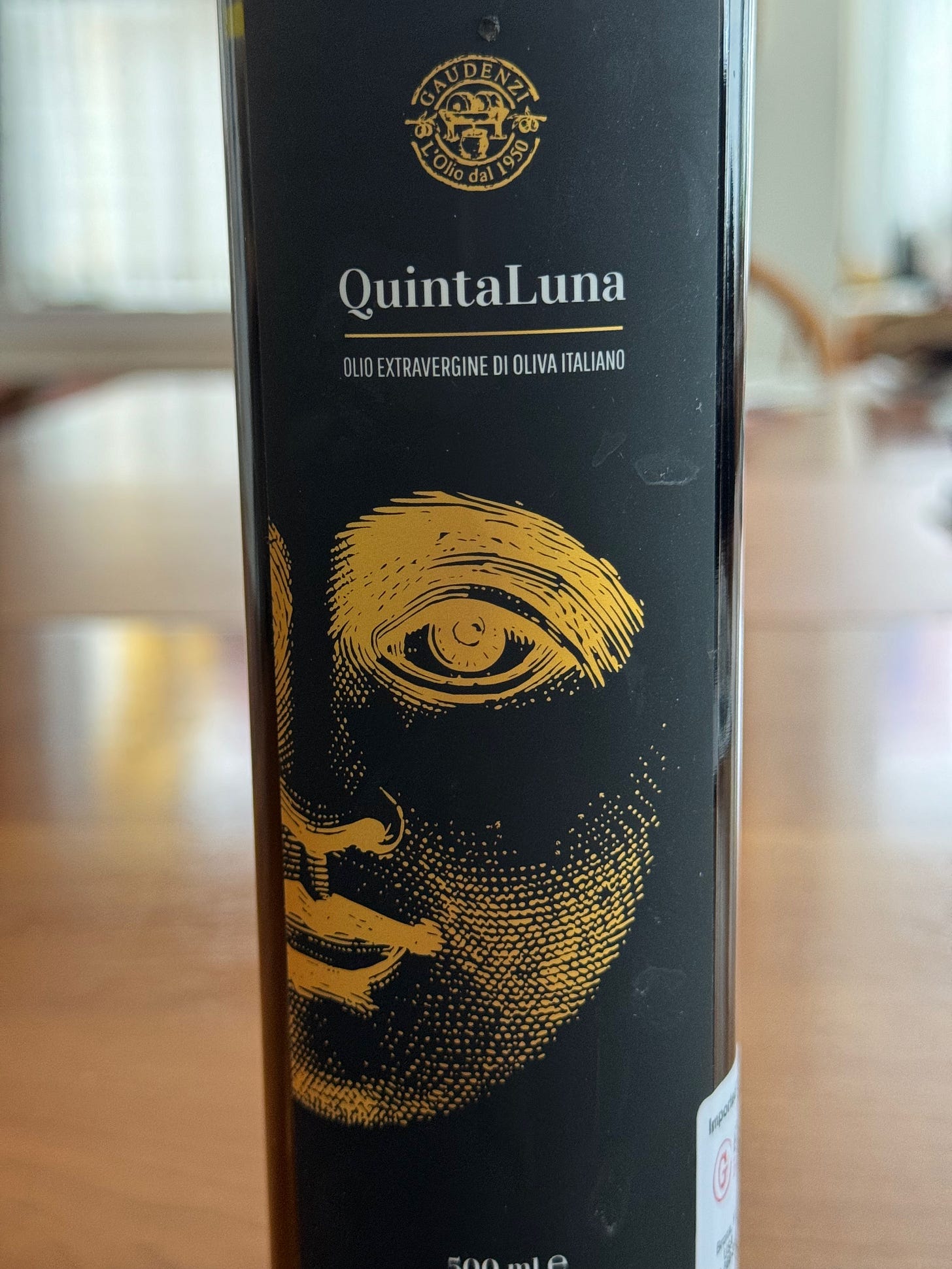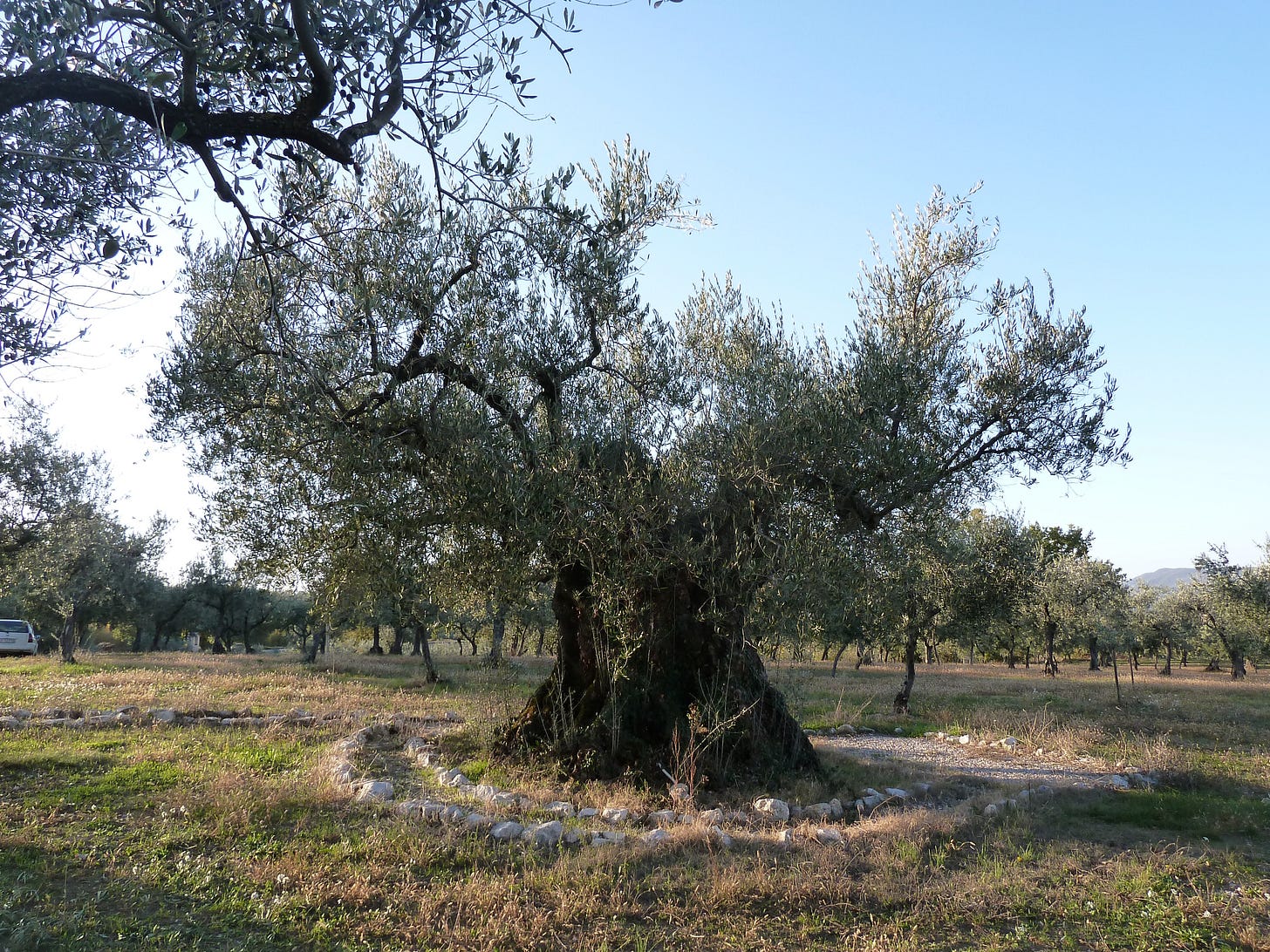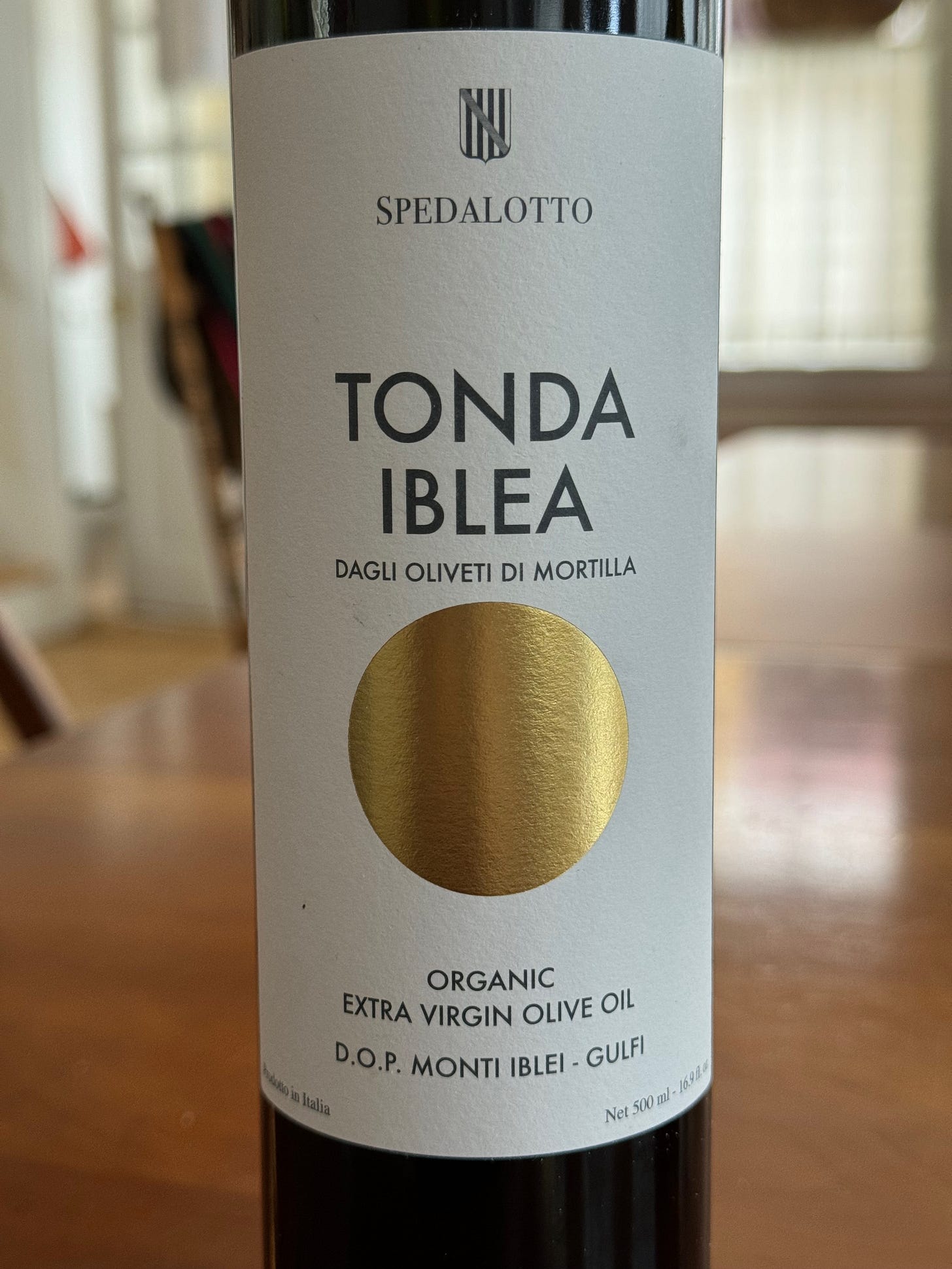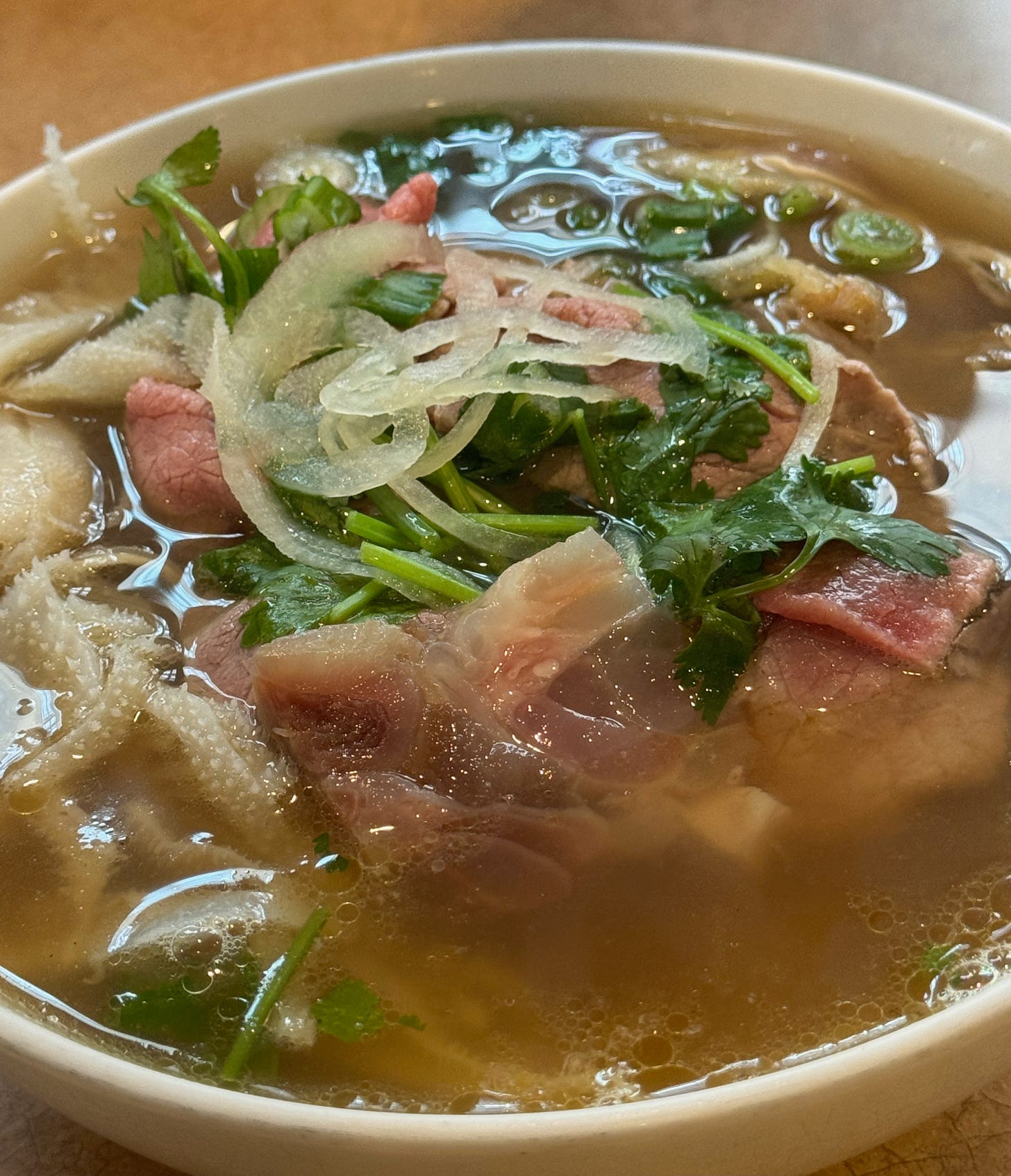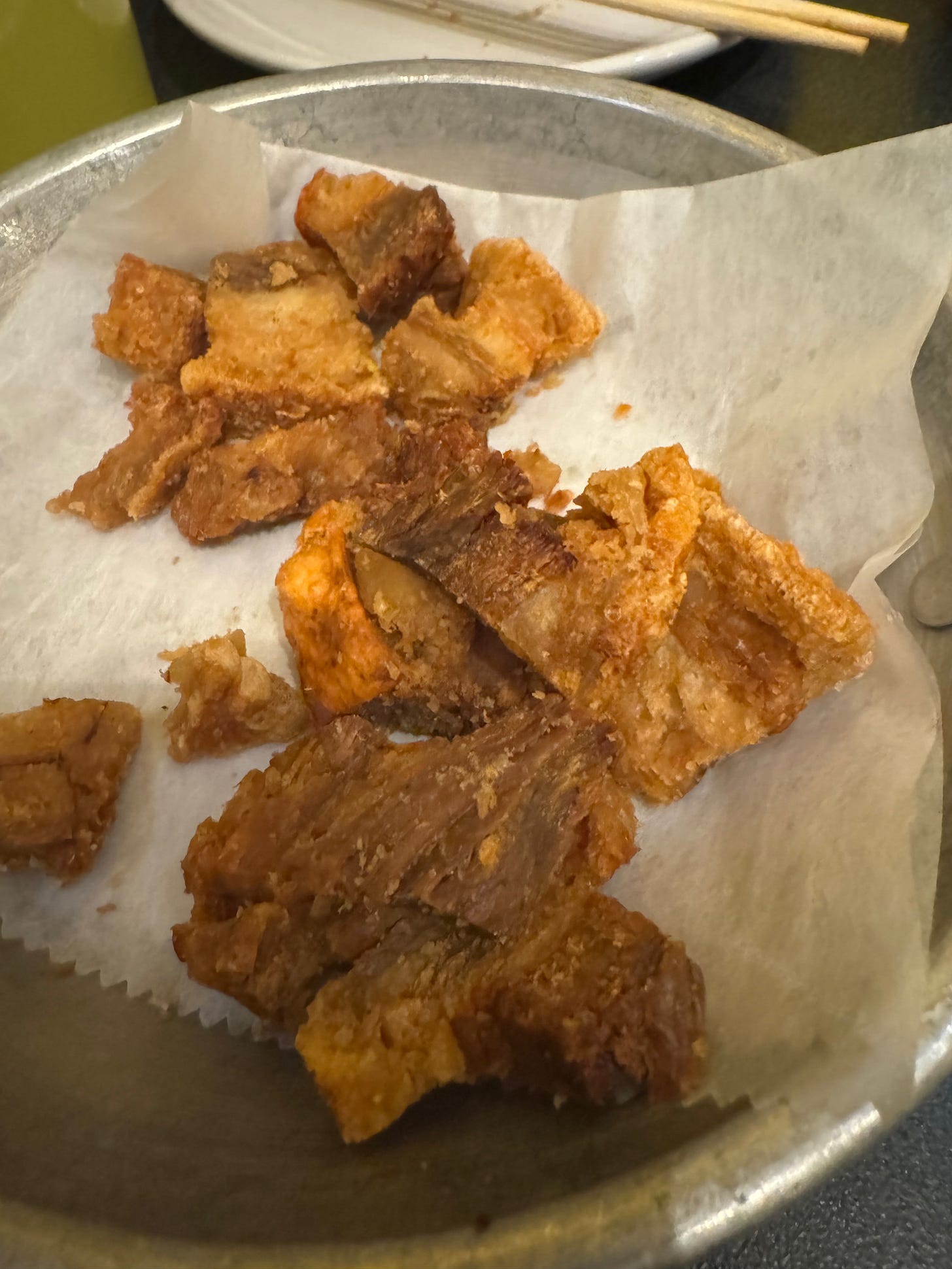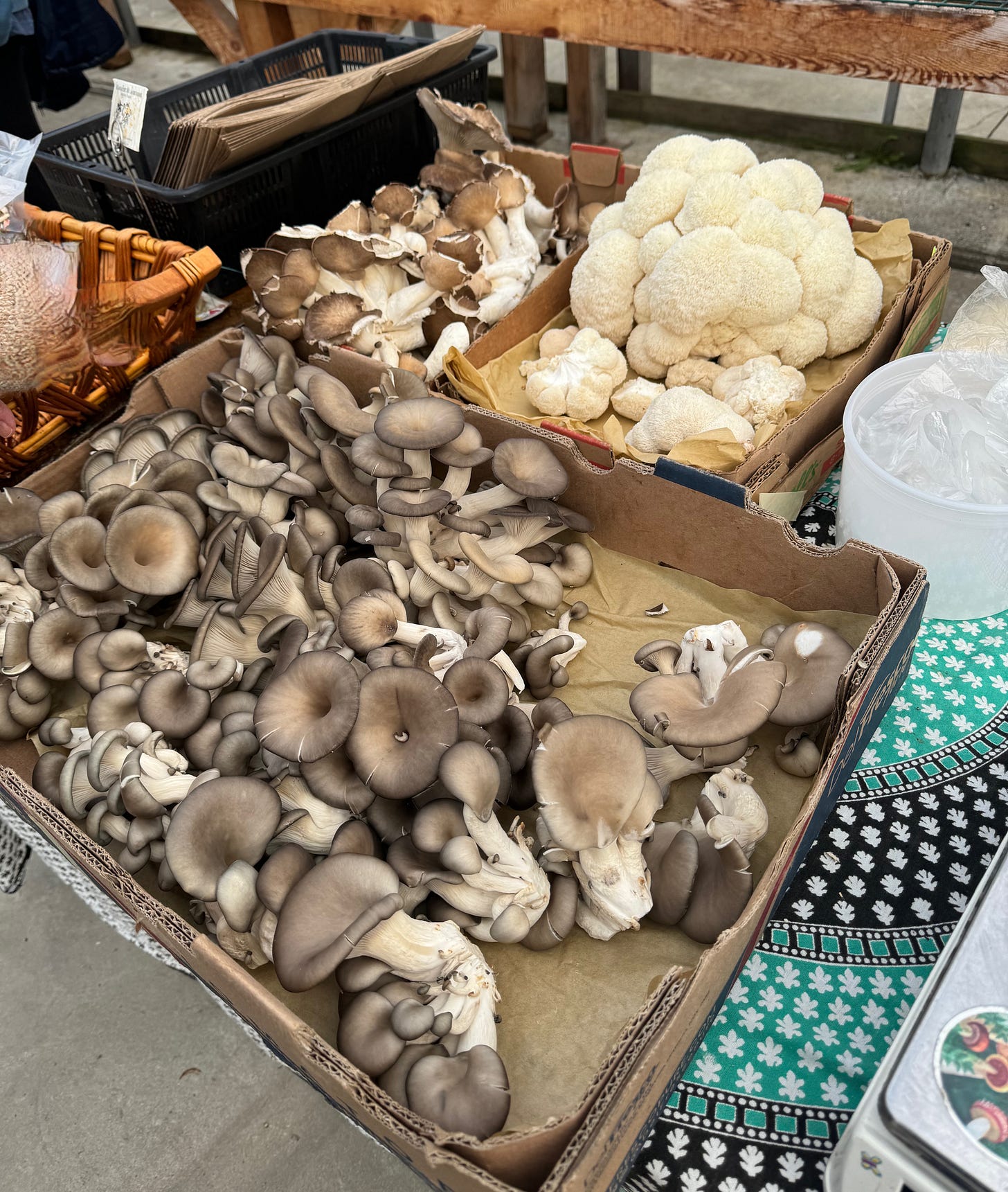New Harvest Olive Oils from Italy
Two fresh new this-season olive oils have crossed my path in the last couple of weeks and both are highly recommendable.
Quintaluna comes from Umbria, a region that’s often regrettably neglected by consumers; connoisseurs, however, know that some of the finest oils in Italy come from the hills of Umbria where the favored cultivar is the moraiolo, an olive that’s naturally very high in polyphenols that give flavor and complexity to fine extra-virgins.
Driving from Perugia south to Spoleto, mostly on the SS 3, you pass a series of towns beginning with Assisi and continuing on to Spello, Foligno, and then Trevi, and you become aware of the dusty-green hills to the east, carpeted with historic olive groves, many of them dating back centuries.
Among them are the groves of the Gaudenzi family, producers of Quintaluna. Everything about this oil is done according to tradition, including the name, Quintaluna, Fifth Moon, meaning the fifth moon after the olive trees blossom in May, the precise time for an early harvest to begin. The result is an oil rich in aromas, yet austere with the pungency that olive oil connoisseurs seek out, and green flavors that recall artichokes and tart, green apples. Moraiolo naturally forms a kind of base line for the oil but it’s also enriched by the presence of a couple of standard cultivars, frantoio and leccino, as well as the rare San Felice olives, little known even in Umbria where the cultivar was saved from extinction by Benedictine monks at the San Felice monastery. This kind of history is irreplaceable and it makes the Quintaluna story even more fascinating—and the oil even more delicious.
Find Quintaluna at gustiamo.com.
Then, heading south to Sicily, Vincenzo Spedalotto’s Tonda Iblea oil comes from a small mini-region of the island, just north of historic Ragusa in the Monti Iblei hills around Chiaramonte Gulfi. Here the Tonda Iblea cultivar is king (or maybe queen). This particular variety has long been a favorite of mine, producing oils with all the complexity of my beloved Tuscans, but with what I think of as a touch of southern sweetness to balance the astringency. Like the San Felice in Umbria, the Tonda Iblea is specific to its territory (its terroir, if you will) and unknown elsewhere, in Italy or the world. I could go into a long digression on the history of olive cultivars but it would take up most of the next three weeks to explain. Just know this: like San Felice olives, Tonda Ibleas are what Italians call autochthonous cultivars, meaning not exactly native but been there so long they have in effect developed their own DNA. You can take a cutting from a tonda iblea tree to California or Tuscany or South Africa, graft it onto local stock, and what results will not be the magnificent tonda iblea of Sicily, not at all. Spedalotto’s Tonda Iblea is an oil with lush but penetrating herbal aromas, think green tomatoes and tomato leaves, bringing to mind sunny Sicilian hillsides carpeted with wild herbs and flowers. That the oil is also certified organic is another plus.
Find Spedalotto Tonda Iblea at Olio2go.com.
Quick Boston Road Trip
In between two crashing storms that crippled the New England coast in January, my daughter and I escaped to Boston for a little urban distraction. The ostensible draw was a spectacular show at the Museum of Fine Arts, “Fashioned by Sargent,” which was designed to show off Sargent’s fascination with his portrait subjects, dressing them up and painting them in all their sumptuous, textured finery, whether feathery batiste morning dresses or heavy velour, satin, and brocade for formal wear. Lots of these portraits were familiar (“Portrait of Madame X,” “Dr. Pozzi at Home”) but it was revelatory to see them all together and in a new perspective, especially when some of the actual costumes were also on display. And it made us both reconsider how very restricted women’s lives were a little over a century ago—restricted even in the weight and complexity of their dress. This was clothing that required a couple of maidservants to arrange the frills and furbelows before madame could venture forth.
Art was the object of our road trip but so was food and we managed to weave in three Asian restaurants with very different vibes during our brief visit. To those who don’t know Boston, it may seem like a totally Yankee city, immersed in its Puritan and Revolutionary past, with Bostonians as emblematic--self-satisfied, socially conservative, politically liberal, and very well educated (all those universities). What’s not usually recognized is that Boston is also a very Asian city. No, it’s not LA, not SF, but still, and in a sense owing to the universities and colleges, Boston has a significant Asian population. It also has an Asian-ish mayor in Michelle Wu, daughter of Taiwanese immigrants, not just the first Asian-American but also the first woman mayor Boston has ever seen.
And Boston also boasts an interesting array of restaurants with cuisines from many corners of Asia. The story that’s always told is of a Chinese super-striver who went off to MIT and was followed by his mother who opened a restaurant to ensure her boy could have the food of home. Is that true? Maybe, but I’ve heard it so many times of so many places that I think it must be apocryphal.
The very first Chinese meal I had in my life, and I can taste it to this day, was in a Chinese restaurant, long gone, on Tremont Street. Later, as an undergraduate, at a time when Chinese still meant Cantonese food interpreted for an American market, I stumbled on the brand new Joyce Chen restaurant in Cambridge where we collegians fell on plates of exotica, hot-and-sour soup, pot-sticker dumplings, scallion pancakes and the like. It was a long way from sweet ‘n’ sour pork and chicken chow mein.
So why not, we said, spend time in Boston looking for great Asian food? Here’s what we sampled:
Taiwan Café, 617-426-8181, 34 Oxford Street (at the corner of Beach Street), in the heart of Chinatown (aka Downtown):
here we indulged in Taiwan spicy beef-noodle stew with its whisper of orange; searingly hot soup dumplings, so delicious, so hard to eat, especially with chopsticks; the pan-fried dumplings called jiao tzi; a disappointing scallion pancake; and surprisingly delicious, Taiwan style pork chops, flattened, spiced, marinated, and cooked to a thin but tasty crisp. As with most Asian restaurants, there was a constant flow of take-out throughout the evening, most of it seemingly repeat (read happy) customers.
Pho Pasteur, 617-482-7467, 682 Washington Street (near another corner of Beach Street, also in the downtown district known variously as Chinatown, the Combat Zone, the Theater District, and just plain Downtown):
This was on our breakfast list, specifically for Vietnam’s great gift to world gastronomy, the hearty beef and rice noodle soup called pho (pronounced fuh), fragrant with ginger, star anise, cilantro, Asian basil, and lemongrass, and rich with both cooked beef shank and thinly sliced raw beef which gets “cooked” when the hot beef stock is poured over it as it’s served. I adore this dish (like almost everyone who tries it) and have had it in Vietnamese restaurants around the world as well as in Vietnamese households, and I will say that pho for breakfast in this historic Boston eatery is almost as memorable as long-ago pho for breakfast in Saigon. Vietnamese shrimp pancakes were also delicious if difficult to eat—but worth the saucy dribbles down my front.
Dakzen, (617) 718-1759, 195 Elm Street, near Davis Square in not-too-distant Somerville, a suburb next door to Cambridge:
Here, we were joined by Cousin Matt, an Old Asia Hand who highly recommended this lively Thai spot, especially for the gyoza (close cousins to jiaotzi), plump, pork-filled dumplings fried crisp; also for the khao soi, usually termed curried noodles but it’s so much more, a rich, brothy noodle dish from northern Thailand and neighboring Burma, aka Myanmar, where Cousin Matt first had it. The engaging restaurant features what the owners call Thai street food, but there are more substantial dishes too. Still, it’s a great place to do the kind of menu-surfing that street food mavens delight in, sampling goong ma khan, khao moo dang, kra duk moo nam dang. I can’t remember what anything was but it was all captivating, as was the one translatable dish, crispy fried pork belly which I devoured.
Mushrooms: Reading Life-Changing Books & Cooking Fungi
There’s not a lot on offer in my local farmers’ market these cold January days. I’m reminded of my friend Eliot Coleman’s observation that at 44º North, nothing progresses in the garden or the greenhouse between early December and late January for a very good reason: the sun is still too low to provide the light needed for growth. What was available in last Saturday’s market were lots of stored roots and onions, some greenhouse herbs, and not much else. It does tug at the imagination when you think back a hundred years or so to what people had to eat in winter on the coast of Maine: potatoes, turnips, squash, onions, and apples, much of it the worse for wear.
But there were mushrooms in the market, plenty of them, from a young farmer who grows his own. These were what you might once have called “wild” mushrooms, although more and more are cultivated these days by clever people responding to the demand. In the case of the young farmer, these were mostly lion’s mane (Hericium erinaceus), oyster mushrooms (Pleurotus ostreatus), king oysters (Pleurotus eringii), and good old shiitakes (Lentinula edodes), a stalwart in supermarket produce sections, where you also find mushroom soup staples like the little button mushrooms and their grown-up cousins, cremini and portobellos.
The remainder of this post, including mushroom recipes, is available to paid subscribers only.
Keep reading with a 7-day free trial
Subscribe to On the Kitchen Porch to keep reading this post and get 7 days of free access to the full post archives.




